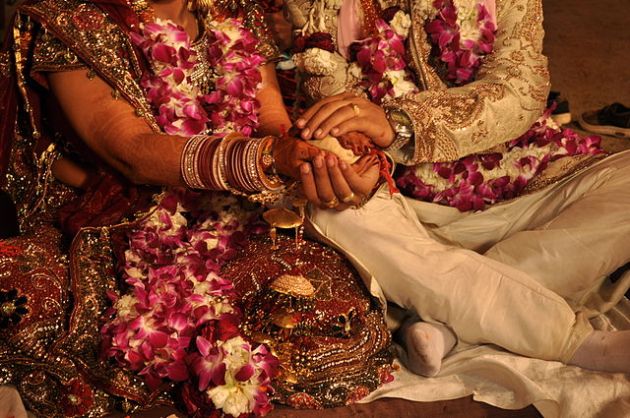Why are random men being trashed on streets by cops?
Recently, India’s largest state by population, Uttar Pradesh (UP), elected the conservative pro-Hindu Bharatiya Janata Party (BJP) into power. They in turn appointed a man named Yogi Adityanath as the Chief Minister (CM). This is a state which feminists would describe as a stronghold of patriarchy. They would also describe the CM, Yogi Adityanath, as a bigot and a misogynist. He is an actual member of a Hindu religious order. He is also known for writing essays criticizing Islam, western feminism and supporting Hindu supremacy. In a particular essay titled “Matrushakti: Bharatiya Sanskruti ke Sandarbh mein” (translation: Women Power: In the context of Indian culture), he argued that women should be given equality lest they see themselves as downtrodden and turn to western feminism, destroying the traditional family values (page 3).One would imagine that his reign would bring nightmares to the women of UP. But instead, the first move he made as CM was address the issue of women’s safety by ordering the police to form anti-Romeo squads. This is a state with severe problems like overpopulation, pollution, unemployment, and basic sanitation. Now this supposed bigot and misogynist was making women’s safety his first priority. The feminists couldn’t believe it. They thought he had lost his mind.
The primary aim of these anti-Romeo squads is to patrol and check crimes against women, primarily cat-calling. Roadside-Romeo is an Indian euphemism for a cat-caller, while eve-teasing refers to cat-calling. In UP, these special police patrols planted themselves in and around places where young women frequent, such as university campuses, near schools, public parks, bazaars and malls. Sometimes members of these squads roam around in plainclothes to caught the cat-callers unaware.
The concept of anti-Romeo squads is not new in India, but for first time they’re acting under the directives from a CM. Sometimes when reports of crime against women increase in a district, the police may form such patrol groups. Sometimes citizens also form watch-groups with similar objectives. However, most of the time all these devolve into Taliban-style morality preaching squads. These are frequently used by conservative parents of girls to threaten boyfriends they don’t approve of. They are also used for petty revenge and extortion. The boys caught by them are usually booked under the anti eve-teasing law or IPC Section 509, under which only men can be charged. This law has been misused so much recently that it had a conviction rate of only 10% in 2015 according to the National Crime Records Bureau.
As expected, the anti-Romeo squads in UP have turned to moral policing. They have begun questioning couples hanging around in parks and malls. If found to be unmarried, the couples are subjected to a heavy dose of moral lecturing and quite often the boy is assaulted for leading the girl astray. The girls are usually let off which a warning as they are thought of incapable of any immorality.
The issue was taken to the state High Court which backed the squads and refused to accept what they were doing is moral policing. The feminists have begun protesting these squads. They argue that these squads are causing greater fear among women than cat-callers, as women can be pulled up for merely talking to a man.
However, it should be noted that these conservative squads fashion themselves as gallant rescuers of damsels in distress. The real victims are thus the men who are fined, assaulted and humiliated. The women are sometimes subjected to lectures and held until their parents pick them up, at worst.
In a particular incident, the squad tied up, kicked around and tonsured a 21-year-old man who gave a lift to his female classmate. His ordeal was captured and circulated online for its apparent hilarity by one of the cops. The girl was allowed to leave unmolested. The guy was then charged with illegal assembly of all things. One cannot have a cat-calling charge without a victim after all.
In another incident, 40 overenthusiastic cops raided a private resident only to catch a female student taking study notes from her tutor. They were taken to the police station where they were interrogated by the police to their satisfaction, following which they were released to their family members. The tutor would probably think twice before taking on a female student in the future. He was just trying make an honest living.
Another unbelievable incident occurred when a 18-year-old boy was caught when he was accompanying his female cousin to a shop. They were held at a police station until their relatives arrived. The boy was made to pay a INR 5000 (USD 77) bride to avoid charges. They managed to film the exchange and had to approach a state assembly-man to seek justice.
It is possible that these squads may have prevented some cat-calling, possibly even some cases of rape and schoolgirl grooming. But the question is, is it worth living in a state of constant terror. Everyday police blatantly pick up random boys for hovering around schools, colleges, cigarette stalls, betel shops and even pastry shops for “questioning”. A boy who was similarly harassed told The Times of India, “For them, any young boy in public on a bike is a ‘majnu’ (Romeo).” A father whose son was picked up said, “It is not the police’s job to decide where boys can stand and where they cannot. My son is 19, and is an adult. It makes no sense to call up his father to say that his son is loitering around.” Everyday people keep posting new videos and pictures of young men begin mocked, humiliated and being handed corporal punishment in public. (Although the government has prohibited cruel and humiliating punishments in public, they continue to be reported.)
From all of this, one comes away with impression that this so-called patriarchal government wants to protect women so much that every single man is a potential rapist. Now, more conservative states are copying these so-called crime prevention tactics. Today, Haryana launched a similar program under the name “Operation Durga” (named after the Hindu goddess of war). Under the ongoing scenario, it is prudent for young men to avoid women, even their own relatives, in public for their own safety. They should also refuse to give lift or tell directions to female strangers. This should also serve as an eye-opening to anyone who thinks conservative political parties are pro-men and anti-feminist. They are gynocentric like all the left-wing parties, but have a different way of expressing it.






